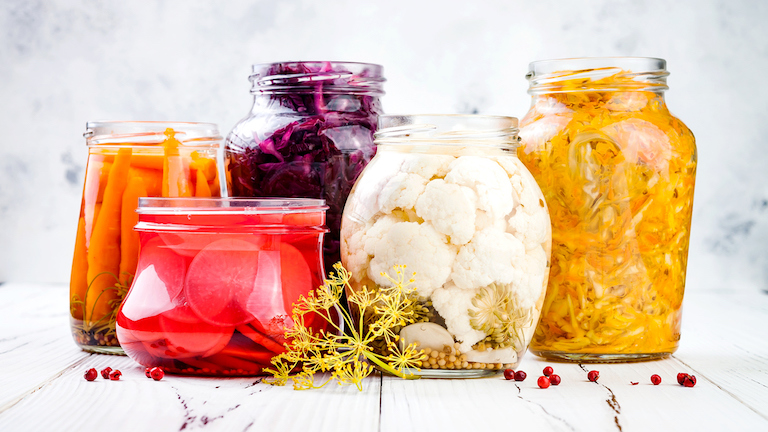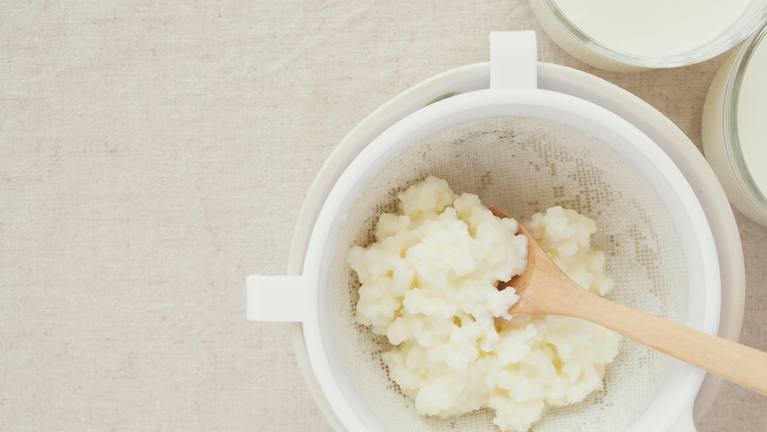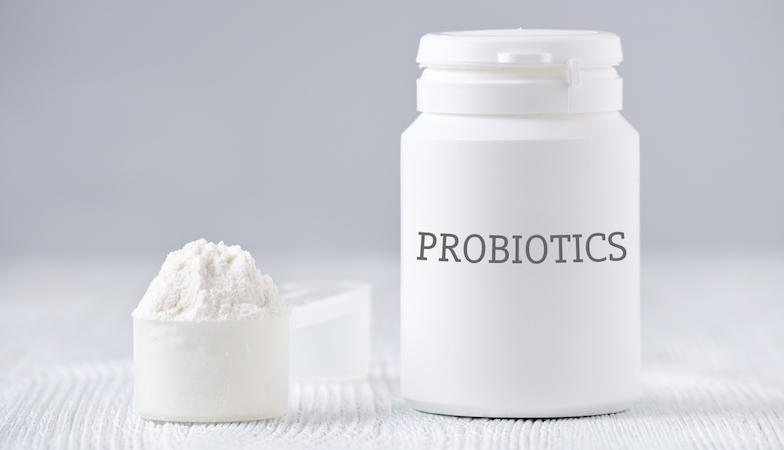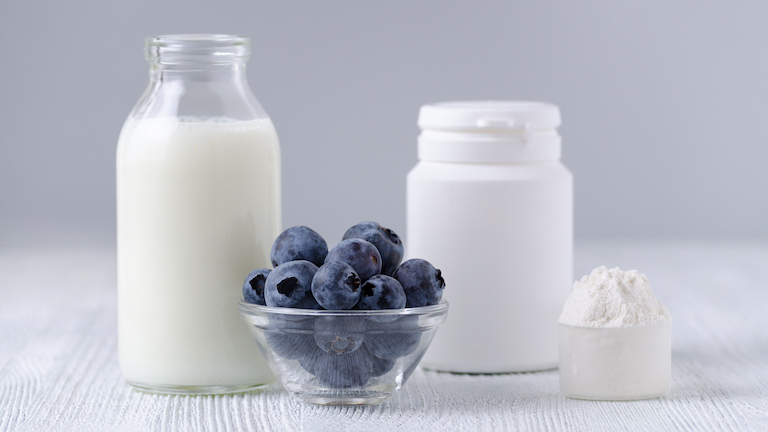We’re always hearing about the importance of taking probiotics but do you even know what they are? Or, how to know which one is best for you? Anna Magee reports
Probiotics are literally everywhere. And if some of the claims made for them are to be believed, they’re essential not only to a healthy gut but also to immunity and general wellbeing.
But do you really need them and more importantly, with so many out there at all different price points, how can we choose one that works? Is the £3 supermarket option the same for example, as the £40 health food store only one?
What’s all the fuss about probiotics?
The investigation into the human microbiome is the most rapidly expanding field of medicine. That’s because a typical adult is colonised by a staggering 100 trillion different species of bacteria, which collectively add up to about two kilograms.
So, while all those microbes live in all our bodies, the ones that have interested scientists in recent decades are those that live in our large and small intestines.
Known as our gut microbiome, these are vast colonies of micro-organisms that populate our gut environment, working in harmony with each other to break down our food and convert it to energy, providing essential enzymes and vitamins and regulating our immune systems.
In recent years, research into the gut microbiome has found that these humble little bacteria found in our large intestines have a huge influence on our gut health and your susceptibility to problems such as Irritable Bowel Syndrome (IBS) and traveller’s diarrhoea.
‘Our understanding of the microbiome has advanced by leaps and bounds in the last decade or so, and we are still only scratching at the surface,’ says leading nutritionist Katherine Pardo.
‘We now know that our gut bacteria help us to properly digest our food, protect us from pathogenic microorganisms, help us detoxify harmful compounds, produce vitamins and other nutrients, keep our guts healthy, and balance our immune systems’.
But our gut bacteria also plays a key role in our susceptibility to allergies, weight and even our mental health.
What affects our gut bacteria?
Our microbiomes can easily become disrupted by diet and lifestyle factors.
‘Unhealthy foods such as refined carbohydrates, will disrupt the levels of good and bad bacteria as they’re broken down into sugar which feeds the bad bacteria, as do certain sugars in some healthy foods too such as fruits, garlic and onions’, Pardo explains.
‘Antibiotics can seriously disrupt the microbiome as they do not distinguish between the good and the bad bacteria, instead wiping everything out.
‘Probiotics should be recommended as a matter of course following antibiotics, to prevent further infections,’ says Pardo. Other lifestyle factors, such as stress and high intensity exercise can also have a negative impact on our gut ecology.

Is food or taking a supplement better?
No doubt you have heard the fuss about eating more fermented foods in the form of live yoghurts, sauerkraut and kefir, a fermented milk drink popular in Easter Europe and gaining popularity here.
It depends what you need.
‘It’s really important to eat different foods high in healthy bacteria such as sauerkraut and yoghurt, especially as these contain lots of varied organisms that will help populate your gut with a wide variety of healthy bacteria which is essential,’ says Pardo.
But taking a probiotic may help if you’re experiencing signs that your gut bacteria may be out of balance (see below). Likewise if you have a high-stress lifestyle or sugary diet that isn’t doing your gut bacteria any favours, you would probably benefit from a supplement.
‘Taking a supplement can help when the levels of gut bacteria are already out of balance because of the sheer numbers of microorganisms that can be delivered in a powder or capsule form,’ says Pardo.
‘A live yoghurt for instance is likely to have levels of live bacteria in the millions, whereas a good supplement will be providing several billion.’

Signs you need a probiotic
Are there any tell tale symptoms that show your body is crying out for more good bacteria?
‘Bloating around the tummy and abdomen with associated wind and gas gives a good indication that the bacteria in your gut are out of balance,’ says Pardo.
‘So, if you’re someone who finds that your clothing gets progressively tighter around the middle throughout the day, then it may be that you would benefit from a probiotic’.
Indeed, figures from Healthista Gut Heath Survey, released last week showed that a staggering 49 per cent of women reported having gut symptoms such as bloating, abdominal pain and flatulence but 15 per cent experiencing bloating every time they eat.
‘Flatulence, bloating, burping, gas, digestive discomfort, gurgling are among the more obvious signs that our microbiome may be out of balance,’ continues Pardo.
But there are more subtle signs too, she continues. ‘Frequent colds and flus, which shows that our immune system is not working effectively, and even low mood or depression, which has also been associated with a disruption in the gut microbiota’.
But not all probiotics are created equal. Different species and strains work on different problems, and some have far more research attached to them than others.
Moreover, when choosing a supplement you need to be sure what you’re paying for (and they’re usually not cheap) has been proven to deliver benefits and survive its way down to your large intestine.
Here are 3 ways to choose a probiotic supplement:
Read the label, like really read it
Let’s face it, Latin was never fun. But if you’re serious about your gut bacteria, there is some Latin that could help as particular strains of bacteria all have Latin names
Probiotics and bacteria in general are categorized by genus, species and strain. So for the probiotic strain Lactobacillus acidophilus NCFM named above, Lactobacillus is the genus, acidophilus is the species and NCFM is the strain.
It’s crucial to choose a product that contains a specific identifiable probiotic strain that has been well-researched. For example, Lactobacillus Acidophilus NCFM is one of the best researched probiotic strains in the world, back by over 60 scientific publications.
‘Clinical studies have shown that specific strains of bacteria may be beneficial for supporting quite specific aspects of health, with certain strains now being investigated in weight loss, traveller’s diarrhoea, urinary tract infection, depression and many more clinical areas,’ says Pardo.
A recent Australian study showed that probiotic supplementation significantly reduced the incidence of fever, coughs, runny noses and the need for antibiotics.
Check if you’re actually getting live bacteria
So, still scouring this label, right? Good, because a probiotic’s label is a clue to its stability and when it comes to finding a product that really delivers benefits, stability is everything.
‘One of the main issues with probiotic products is stability,’ says Pardo. ‘Many products will claim they contain a certain number of live bacteria, but due to lack of stability, a significant number of organisms may die off before the product is consumed.’
That’s why it’s important to look for a product that guarantees the number of organisms in the product at the date of expiry, she explains. Here’s what to look for:
Is it shelf stable? – look for use of advanced stabilization technology
Is the number of organisms on there? For example 25 billion live organisms
Are they guaranteed at date of expiry? – some are only guaranteed at date of manufacture which means they’re less likely to survive
‘If a product says it is shelf stable, make sure you look for indications that this is truly the case, such as use of advanced stabilization technology, batch testing and analysis and a statement referring to the number of live organisms that are guaranteed at date of expiry, rather than date of manufacture.’
Phew, got all that? Good. But what about the number on the label? You’ll often see numbers such as 50 billion live organisms quoted. Is more better?
‘The number in the description matters, so if it says the product contains 25 billion live organisms that should be the case.’
As bacteria can die off, you need to be sure the probiotic has been manufactured in the best possible atmosphere to ensure their survival.
Checking the number of live organisms guaranteed at date of expiry rather than date of manufacture can help with this, says Pardo.
A symbol such as the ProtectAir product technology that indicates it has proven stability and shelf life, basically guaranteeing that the product contains live not dead bacteria, is also essential to look for.
‘Stating the number of live bacteria at date of manufacture, rather than expiry,’ says Pardo. ‘Bacteria can die off very quickly, so if you’re purchasing a product a year or a long time after the date of manufacture, there may be little or no live bacteria left in there’.

Know which strains are most effective for what you need
Because of the wealth of evidence now emerging that specific strains may be useful for specific health issues, it’s important to use a well-researched strain for the health area you are looking to support. Here are some examples of strains that can help common conditions.
Gut health and IBS
Look for: Lactobacillus acidophilus NCFM
We have good and bad bacteria in our guts and probiotics help by topping up the levels of beneficial bacteria in the small intestine and bowel, helping to selectively “crowd out” the bad bacteria.
Lactobacillus acidophillus NCFM is backed by over 60 scientific publications, many of them relating to gut health.
In a 2016 randomised, triple blind trial published in the World Journal of Gastroenterology adult volunteers with IBS were given either probiotic supplements containing Lactobacillus acidophillus NCFM or placebo daily for 12 weeks.
In those with severe to moderate abdominal pain, symptoms were reduced significantly compared to those who took a placebo.
Other studies have shown it can help improve the digestion of lactose for those who find they are intolerant to milk and reduce the associated symptoms especially in children.
Try: Nutri Advanced Ultra Probioplex Plus (£13.50 for 30) which contains 25 billion live bacteria Lactobacillus acidophillus NCFM and B. lactis bi-07
Diarrhoea
Look for: Saccharomyces Boulardii
Saccharomyces Boulardii (S. Boulardii) is a probiotic yeast that also has a lot of research to back up its use for gut symptoms.
A small study of patients whose IBS symptoms showed up as diarrhoea mostly found that those who took probiotics had fewer and more firm daily bowel movements than before.
Meanwhile research on 1016 travellers visting Northern Africa, the Middle East and the Far East found that those who starting taking S. Boulardii five days before travel and continued throughout their trips had a signifcantly reduced incidence of traveller’s diarrhoea.
Try: Nutri Advanced Ultra Probioplex Duo (£21.01 for 30) which contains 14.5 billion live bacteria B. lactis Bi-04, B. lactis Bi-07, Lactobacillus acidophillus NCFM, L. paracasei Lpc-37, Bifidobacterium bifidum Bb-02 and S. Boulardii.
Frequent colds and flu
Look for: Bifidobacterium lactis Bi-04, Bifidobacterium lactis Bi-07 and Lactobacillus acidophillus NCFM
Your gut bacteria is essential to the healthy functioning of your immune system, which is why ample evidence exists showing how certain probiotic strains can help colds and flu.
For example, one 2014 randomised, double-blind, placebo-controlled study was carried out on 465 healthy participants who exercise regularly because high levels of regular exercise can stress the immune system.
The Australian research compared the effects of supplementation with probiotics containing Bifidobacterium lactis Bi-04 (B.lactis Bi-04) alone (Group 1), a blend of Lactobacillus acidophillus NCFM and Bifidobacterium lactis Bi-07 (B. lactis Bi-07) or placebo for five months.
The researchers found that group one had a 27 per cent lower incidence of upper respiratory infections and group two had a decreased incidence of infections but the benficial effects were not as pronounced as group one.
It may help with kids’ colds too. In 2009, researchers took 326 children aged 3-5 and randomly divided them into three groups.
Group 1 received placebo, group 2 were given Lactobacillus acidophillus NCFM and group 3 were given a blend of Lactobacillus acidophillus NCFM and Bifidobacterium lactis Bi-07 (B. lactis Bi-07).
Over a period of six months, results showed that probiotic supplementation significantly reduced the incidence of fever, coughs, runny noses and the need for antibiotics. The best effects were seen in a combination Lactobacillus acidophillus NCFM and B. lactis Bi-07.
Post-antibiotics
Look for: B. lactis Bi-04, B. lactis Bi-07, Lactobacillus acidophillus NCFM, L. paracasei Lpc-37 and Bifidobacterium bifidum Bb-02.
Antibiotic are probably the biggest killer of your gut’s healthy bacteria, also encouraging the growth of ‘bad’ bacteria that come with side effects such as diarrhoea and increased infections.
A 2009 placebo-controlled study investigated the capacity of a probiotic mixture to minimise the disruption of intestinal bacteria in people taking common antibiotics.
One group was given a placebo and the other a probiotic mixture containing the strains B. lactis Bi-04, B. lactis Bi-07, Lactobacillus acidophillus NCFM, L. paracasei Lpc-37 and Bifidobacterium bifidum Bb-02.
The ones taking the probiotic mixture had the least disruption in their healthy gut flora, the research, which was published in the Journal of Medical Microbiology found.
Try: Nutri Advanced Ultra Probioplex IB (£36.90 for 30) which contains 60 billion live bacteria of Lactobacillus acidophillus NCFM and B. lactis Bi-07.
Yeast infection (Candida albicans)
Look for: Saccharomyces Boulardii
Candida albicans is a type of ‘bad’ bacteria that causes infections in the intestines and can cause thrush, which is a yeast infection of the vagina that affects a staggering three quarters of women in their lifetimes with half of those having repeated episodes.
A 2010 study published in FEMS Microbiology Letters found that S boulardii helps to reduce candida infection also helped lowered the inflammatory responses that could cause symptoms such as vaginal thrush.
More related Healthista content:
What’s REALLY going on with your gut health?
How taking probiotics could improve your gut health
Got low energy? Here’s why a probiotic could help
This sauerkraut recipe from a Michelin star-trained chef will make you love fermented food
30-second protein smoothie recipe with probiotics
What’s REALLY going on with your gut health?
Like this article? Sign up to our newsletter to get more articles like this delivered straight to your inbox.























































